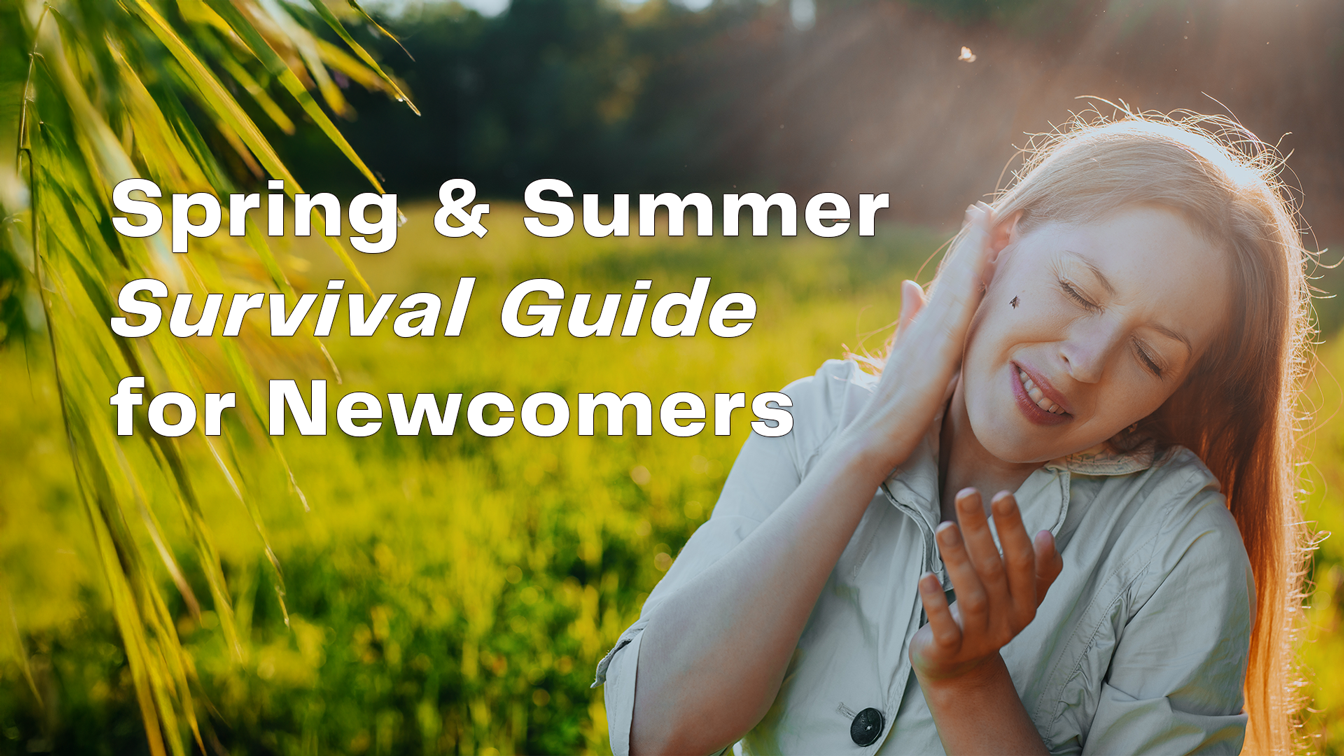By Amy Howell, ONE Florida Group
Welcome to Northeast Florida! You’ve landed in a pretty amazing place – think beautiful beaches, warm sunshine, and lush, green landscapes everywhere you look. But before you get too comfy in your flip-flops, there are a few things you’ll want to know to make life here even better. Consider this your “survival guide” (don’t worry, it’s not that scary!) to our unique climate and lifestyle.
1. Getting to Know the Climate – Sunshine with a Side of…
- Subtropical Sunshine: Yep, we’ve got a subtropical climate, which means mild winters and hot, humid summers. It’s basically outdoor weather almost year-round, but there are a couple of things to keep in mind:
- High Humidity: This is the big one. It can make it feel way hotter than the actual temperature on your thermometer. We’re talking about the “heat index” – that’s the number that tells you what it really feels like outside when you combine the temperature with the humidity. A 90-degree day can easily feel like 100+ degrees. Oof!
- Frequent Summer Storms: Get ready for afternoon thunderstorms – they’re often quick but intense, like Mother Nature’s way of giving us a quick cool-down.
- UV Index: Florida sunshine is strong! You’ll want to keep an eye on the UV Index, which you can find on most weather apps. It tells you how strong the sun’s rays are, even on cloudy days. Here’s a local’s secret: We don’t slather on sunscreen every single time we step outside. We check that UV Index! If it’s low, we might just wear a hat and long sleeves. If it’s high, we definitely take extra precautions.
- Daily Summer Showers—Why They Happen: During the summer, the sun heats up our humid air super-fast. As that moisture goes up and cools down, it creates clouds, which then let loose with those short, refreshing rain showers. Once you’re used to it, you’ll start to appreciate them – it’s like a free air conditioning break! Just make sure to have a reliable weather app handy (maybe even a hyperlocal one!) because the timing and intensity can vary a lot.
2. Spring Cleaning & “Set-Up” Tips – Making Your Home Florida-Ready
- Declutter & Deep Clean:
- Store Winter Items: Pack away those heavy clothes and blankets – you won’t be needing them for a while!
- Open the Windows: Let that fresh Florida breeze blow through the house.
- Wash Windows & Screens: Get rid of the winter grime so you can enjoy that gorgeous sunshine.
- Allergy Alert!: Spring in Florida also means pollen…lots of it. If you’re prone to allergies, consider getting an air purifier and chatting with your doctor about how to manage those sniffles.
- Mold Prevention: Florida and humidity go hand in hand. Make sure the bathrooms and kitchen are well ventilated. Be sure to use those exhaust fans.
- Lighten Up Your Decor:
- Bedding: Swap out heavy comforters for light and breezy linen or percale sheets.
- Fresh Scents: Ditch those winter candles and go for summery fragrances like citrus or coconut.
- Tropical Centerpieces: A bowl of lemons, limes, or even some seashells can add a fun, beachy vibe.
- Check Safety Essentials:
- Smoke Alarms & CO Detectors: Test ’em regularly and replace the batteries if needed.
- Dryer Vent: Clean that dryer vent to prevent lint build-up – it’s a fire hazard you definitely want to avoid.
3. The Pest Factor – Because Bugs Love Florida, Too
- Bugs, Bugs, Bugs: Our subtropical climate is basically a paradise for pests, year-round. Here’s the lowdown:
- Common Critters: You’ll likely encounter palmetto bugs (which are basically giant cockroaches – sorry!), ants, mosquitoes, termites, and those tiny biting midges called no-see-ums.
- Professional Pest Control: Bug Mechanix, one of our Vetted Pros, offers awesome solutions for everything from termites to everyday pests. And guess what? They’re giving ONE Florida Group users 20% off!
- DIY Solutions: If you’re more of a hands-on type, you can try some DIY methods. Keep your kitchen super clean, seal up any cracks or crevices, and use natural repellents. But for serious infestations or termites, it’s best to call in the pros.
- Lovebugs: Twice a year you may encounter lovebugs. These harmless insects swarm in large number, and can be a nuisance. They do not bite or sting, but their acidity can damage car paint.
- Mosquito Management:
- Eliminate Standing Water: Empty out flowerpots, clean those gutters, and fix any drainage issues. Basically, get rid of any standing water around your house – mosquitoes love to breed there.
- Natural Repellents: Citronella candles, essential oils, or even mosquito-repellent plants (like lavender or lemon balm) can help keep those biters away.
- No-See-Um Note: Those tiny no-see-ums are a real pain, especially near marshes and at dawn/dusk. Regular screens won’t keep them out; you might need finer mesh screens.
- Professional Services: For maximum outdoor enjoyment, consider scheduling mosquito treatments with a reputable company.
CLAIM YOUR DISCOUNT!
Download our app, head to the DISCOUNTS section, and explore exclusive offers from our vetted home pros. Don’t miss out on Bug Mechanix’s special 20% off service for our app users!
4. Beating the Heat with Your AC – Keeping Cool is Key
- Essential Maintenance:
- Schedule Tune-Ups: Twice a year, have a pro check out your AC system to make sure it’s running efficiently.
- Change Filters: Change those filters monthly! It improves air quality and helps your AC last longer.
- Humidity Control: In our muggy summers, a dehumidifier can make a huge difference in your comfort level.
- Energy-Saving Hacks:
- Programmable/Smart Thermostat: Get yourself a smart thermostat! It lets you schedule temperature changes, so you can save money on your energy bill by automatically adjusting the temperature when you’re away or asleep. Some can even learn your habits and adjust on their own!
- Ceiling Fan Direction: Set your ceiling fans to rotate counterclockwise in the summer – it creates a nice, cooling breeze.
- Window Tinting: Consider window tinting, to reduce heat and lower costs.
- Blackout Curtains: Use blackout curtains or blinds to keep the sun out.
5. Creating Your Outdoor Oasis – Florida Living at Its Best
- Lush Lawn & Landscaping:
- Regular Mowing & Fertilization: Keep that lawn looking healthy and green.
- Tree & Shrub Trimming: Trim trees and shrubs to prevent storm damage and keep your place looking sharp.
- Irrigation Check: Make sure your sprinklers or drip lines are working properly.
- Watering Restrictions: Important! Be aware of local watering restrictions – they’re common in Florida to conserve water. Check with your local utility company for the current schedule.
- Outdoor Living Spaces:
- Clean Patio Furniture: Wipe down surfaces, wash cushions, and prep the grill (and be sure to check those propane connections for leaks! Never grill inside!).
- Native Plants: Go for native plants! They’re more drought-tolerant and pest-resistant, which is a big win in Florida’s climate. Try easy-to-grow options like beach sunflower, firebush, or saw palmetto.
- In addtion, consider using rain barrels and composting.
6. Hurricane Preparedness – It’s Not Fun, But It’s Necessary
Hurricane season runs from June 1st to November 30th. Being prepared is essential.
- Hurricane Shutters: Know how to install your hurricane shutters, or consider investing in them if you don’t have them.
- Landscape Maintenance: Keep your yard clutter-free – loose items can become dangerous projectiles in high winds.
- Flood Insurance: Even if you’re not in a designated flood zone, flood insurance is worth considering.
- Evacuation Zones: Know your evacuation zone! You can find this info on your county’s emergency management website. If you’re in an evacuation zone, be ready to leave when authorities tell you to.
- Emergency Kit: Have a hurricane kit stocked with essentials: water (at least a gallon per person per day for several days), non-perishable food, a first-aid kit, medications, flashlights, batteries, a battery-powered or hand-crank radio, and copies of important documents (in a waterproof bag).
- Family Communication Plan: Create a family communication plan. Designate an out-of-state contact person everyone can check in with if you get separated.
- Pet Preparedness: Don’t forget your furry friends! Have a plan for your pets, including food, water, medications, and a carrier or leash.
7. Tips & Tricks for Total Newbies – Welcome to the Neighborhood!
- Embrace the Outdoors:
- Beach Time: Jacksonville Beach, Neptune Beach, and others are perfect for soaking up the sun, catching some waves, or taking a relaxing evening stroll.
- Parks & Trails: Explore the St. Johns River by kayak or hike through our beautiful local nature preserves.
- Connect with the Community:
- Local Events: Check out farmers’ markets, art walks, and festivals – they’re a great way to meet people and get to know the area.
- Neighborhood Exploration: Each part of Northeast Florida has its own unique vibe. Take some road trips to discover your favorite spots!
- Smart Essentials:
- Sunscreen & Bug Spray: These are must-haves in your Florida toolkit.
- Stay Hydrated: Water bottles, water bottles, water bottles – trust us on this one.
- Factor in Drive Times: Jacksonville is HUGE, land-area-wise. Driving from one side of town to the other can easily take an hour or more, even without traffic. Plan accordingly!
- Toll Roads: Be aware that there are toll roads. Consider getting a SunPass.
- Red Tide Awareness: Be aware of red tide. Check local advisories before swimming.
8. Native Landscaping & Eco-Friendly Hacks – Even Seasoned Locals Can Learn a Trick or Two
- Native Plants: They need less water and are more resistant to local pests.
- Defined Borders: If your yard tends to look a little “wild”, a neat edge can make it look intentional.
- Wildlife Friendly: Leaving a dead tree trunk can provide a habitat for birds.
- Rain Barrels: You can use rain barrels to collect water and help with your water bill.
- Composting: Composting is a great way to create nutrient-rich soil.
9. Home Maintenance Checklist – Stay on Top of Things
| Task | Frequency |
|---|---|
| Replace air filters | Monthly |
| Check safety devices | Monthly |
| Look for leaks and pests | Monthly |
| Clean gutters | Biannual |
| Inspect roof | Biannual |
| Service HVAC | Biannual |
| Vacuum refrigerator coils | Biannual |
| Deep-clean dryer vent | Annual |
| Pressure wash exterior | Annual |
| Trim trees/landscape | Annual |
| Refresh disaster kits | Annual |
Closing Thoughts
Spring and summer in Northeast Florida are all about warm days, those refreshing afternoon showers, and plenty of sunshine. By tackling some key maintenance tasks, getting a handle on pest control, and being prepared for hurricane season, you’ll be all set to enjoy everything our region has to offer.
And remember, if you have any questions about real estate or just life in Northeast Florida, I’m Amy Howell at ONE Florida Group, and our team is here to help you find your perfect piece of paradise and make your transition to Florida living as smooth as possible. Download our app at onefloridagroup.com/app to unlock exclusive deals – like that 20% off from Bug Mechanix – and get even more tips for your new Florida lifestyle.
Welcome home, and happy adventuring!



